What makes an iconic work of art?
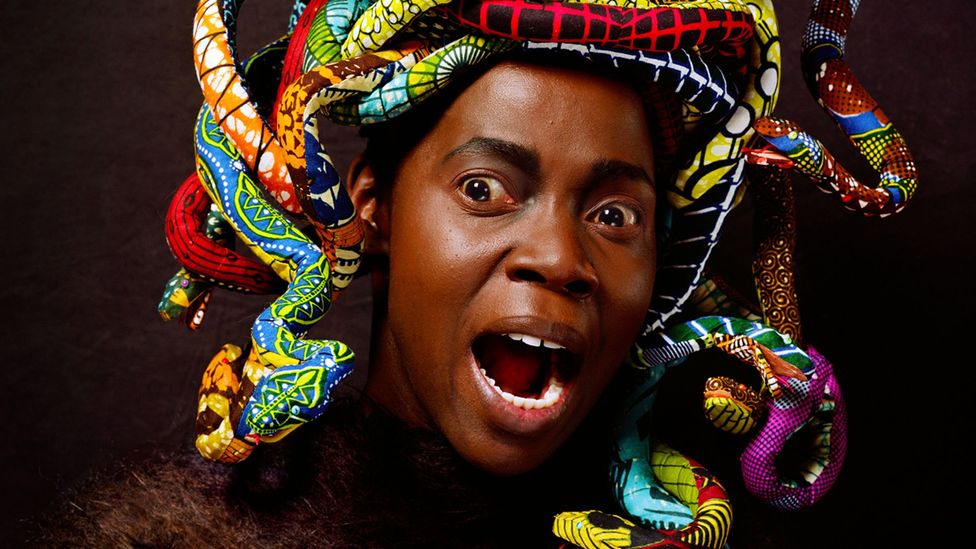
As a new exhibition opens in Helsinki, Cath Pound explores our complicated relationship with masterpieces.
T
The reason works of art become iconic are many and varied, from the vagaries of taste to museum acquisition policies and competition between collectors. For centuries, artists were obliged to learn by copying work from an established canon and, although the late 19th Century saw many begin to rebel against this stranglehold, there is no doubt that the best-known, ‘iconic’ works and Water Colour World still exert a powerful draw today.
More like this:
– What do our dreams mean?
– Paintings that find light in darkness
– The rainbows that swept the world
As a new exhibition at The Ateneum in Helsinki shows, they provide a rich bank of instantly recognisable source material that artists can reference via technique, imagery or subject matter in order to create undeniably contemporary works. Often criticising their associations with race, class or gender, these new works can also allow us to see the sources of their inspiration through fresh eyes.

Single Nights, Annabelle (2007) by Mat Collishaw (Credit: Mat Collishaw)
Mat Collishaw has a long and intriguing history of adapting the imagery of celebrated artists and genres to portray unrelentingly modern themes. The series Single Nights (2007) is styled on Georges de la Tour’s intimate interior scenes of women reflecting on their lives and particularly evokes his portrayals of Mary Magdalene. In place of a woman who was unfairly vilified by the Catholic Church, he has shown a group of women who are all too often equally condemned by modern society – single mothers. In darkened, candle-lit rooms Collishaw highlights their bond while also introducing an air of meditation and contemplation. “They’re thinking what could have happened. Where would I be now if I didn’t have this kid?,” he tells BBC Culture.
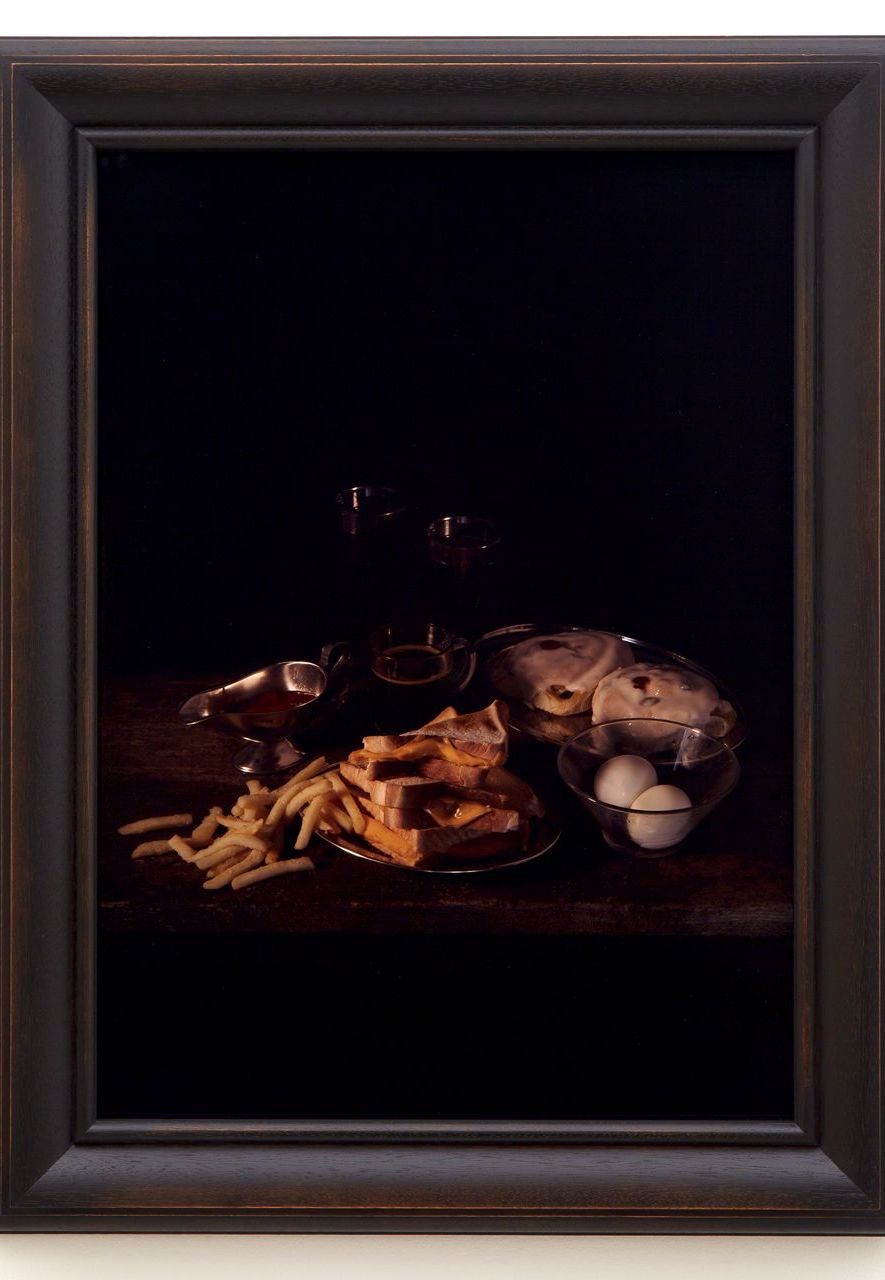
Collishaw’s Last Meal on Death Row series recreated the menus requested by US prisoners with death sentences (such as Gary Miller’s, pictured) (Credit: Mat Collishaw)
Although quite different in subject matter, Collishaw’s Last Meal on Death Row, Texas series (2011) has an equally meditative quality to it. The series was inspired by a lurid set of photographs on the same theme Collishaw saw in The Sunday Times Magazine more than 30 years ago. Despite their garishness they “still had this incredible power to them”, he says. He thought if he re-staged them as 17th-Century vanitas paintings, it might encourage people to think about all the things associated with the genre; the meaningless of worldly goods and the transience of life. “And if you can get people thinking about those things while they’re looking at a cheeseburger, that’s quite an achievement,” he says. Of course, because his images are based on real-life choices made by prisoners, they also reference the brutality and innate prejudice of the US justice system. “There’s a lot of African-American food, a lot of Mexican food, because they are overrepresented in the prisoners that are on death row,” says Collishaw.
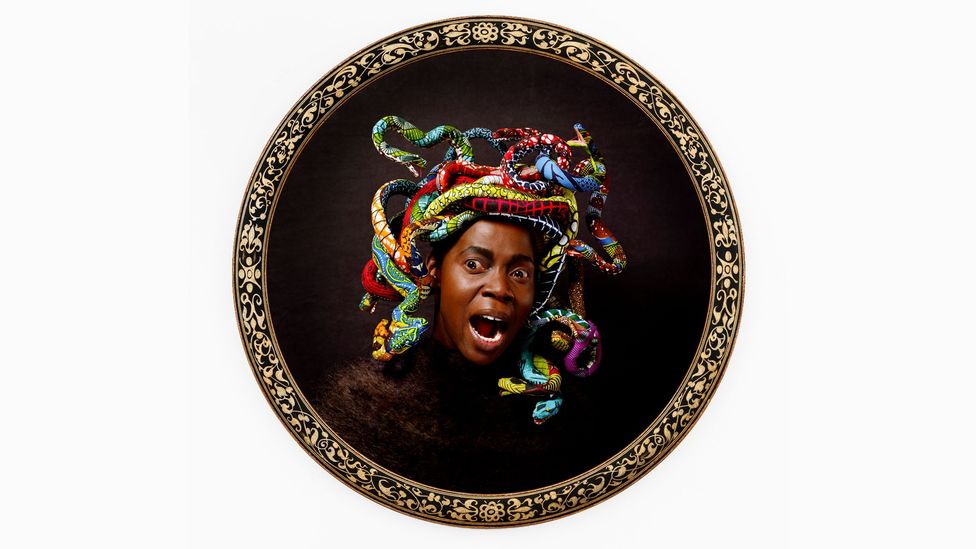
Yinka Shonibare uses textiles in a subversive way, as with his pastiche of Caravaggio’s 1597 painting of Medusa (Credit: Yinka Shonibare, courtesy James Cohan)
Yinka Shonibare’s use of iconic artworks to explore the construction of cultural identity and the impact of colonialism and post-colonialism seems all the more relevant in the wake of the global Black Lives Matters protests that have shown how little some know about, or want to engage with, their colonial histories. In his Medusa digital prints (2015), Shonibare has taken Caravaggio’s famous head of the Gorgon and replaced it with women of four different ethnic origins. Each has African fabric in place of snakes for hair. This fabric, which has a complex history, is integral to the work of Shonibare, who was born in the UK and grew up in the UK and Nigeria . Although now closely associated with African identity, it has its origins in Indonesia and was factory produced by the Dutch for the African market. “It has become the perfect metaphor for the African diaspora because of the different cultural origins of the fabric,” Shonibare says in the exhibition catalogue.
Desecration or creation?
The Chapman Brothers have created many hundreds of works related to Goya, most notoriously drawing over original copies of his etching series The Disasters of War whose graphic depictions of violence, intended as a warning against the horrors of conflict, were considered too horrific to be shown in his lifetime. But as Jake Chapman tells BBC Culture in characteristically flamboyant prose, they are not conventionally inspired by his work. “To be inspired by something presupposes a certain poetic tinge which – in the case of Goya’s Disasters of war – seems entirely unjustified. In fact, it’s entirely necessary to defend Goya from such poetic redemption since the radicality of the work lies in the disqualification of bourgeois metaphysics… [rejecting] spiritual redemption in favour of the mortal physics of sagging dead flesh,” he says via email.
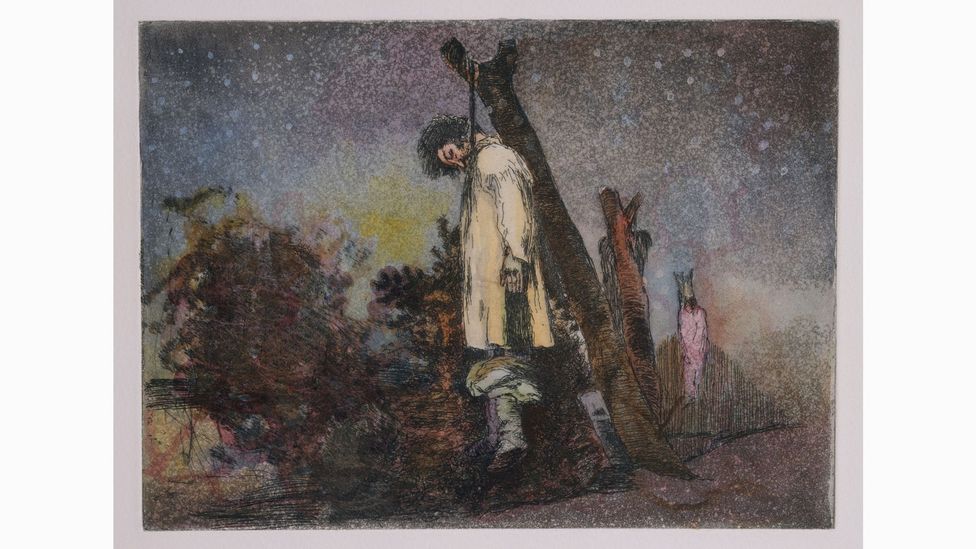
The Chapman brothers drew over original etches by Francisco Goya in their Disasters of War work (Credit: Jake and Dinos Chapman)
He sees this as particularly evident in Great Deeds Against the Dead, which features mutilated bodies hanging from trees. The brothers have also reinterpreted the work in sculptural form on a number of occasions, often to gruesomely humorous effect. Many have reacted in horror to what they see as the desecration of Goya’s work but Chapman is sceptical that the images could ever have evoked the desired response of rejecting violence. He says their intention in adding to the series was to “re-incriminate the Disasters of War… to depose their institutional appropriation and rescue them from the glib bad conscience that hangs over them, bemoaning ‘man’s inhumanity to man’.” Strange as it might seem, the Chapmans’ work could actually allow us to return to Goya’s work and appreciate it on a guilt-free, purely aesthetic level.
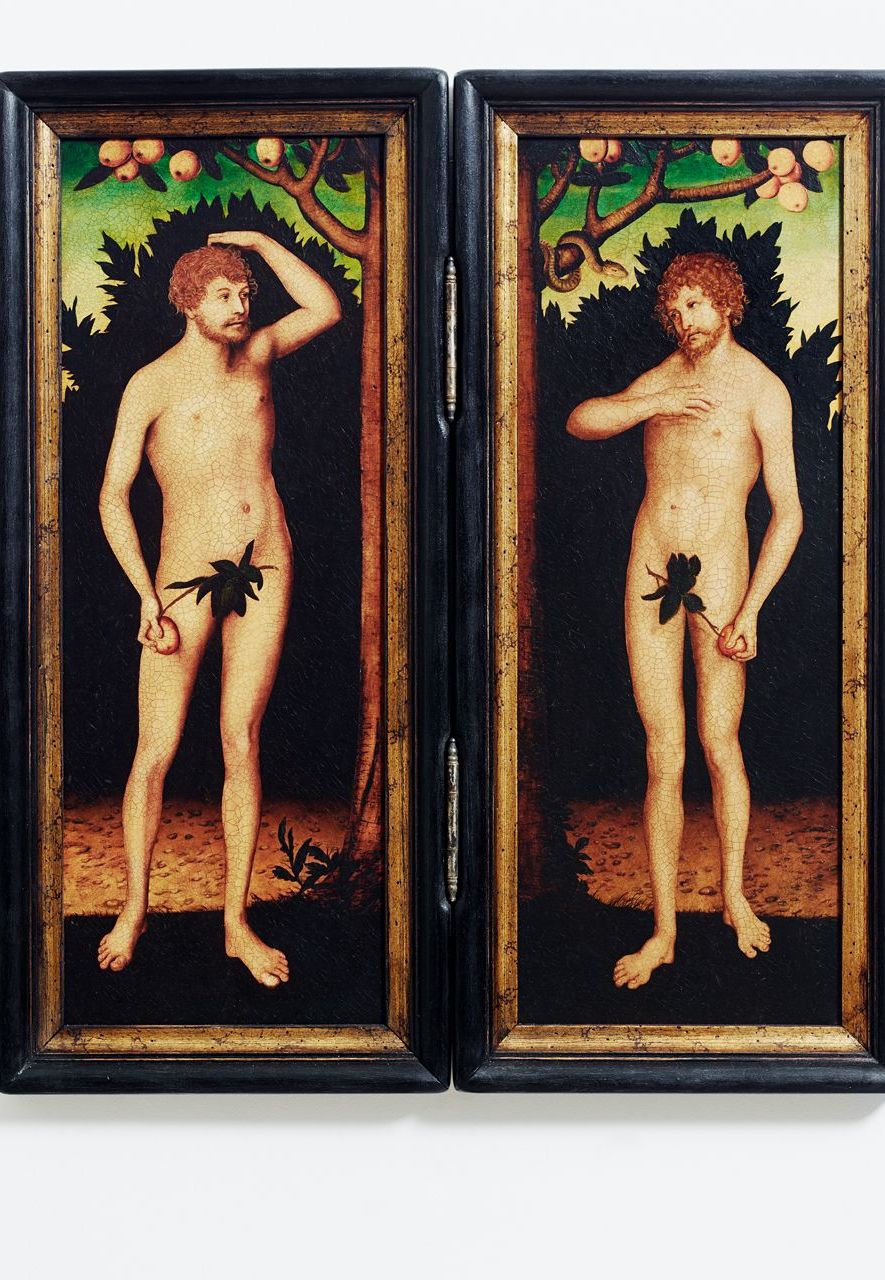
Adam and Adam (2014) by Nancy Fouts (Credit: Nancy Fouts’ Private Collection/Photo Dominic Lee)
The work of Nancy Fouts also allows us to reassess the nature of iconic works, albeit in a far more light-hearted vein. She creates hybrids of two different masterpieces – such as her Brueghel Lowry (2013) or The Thinker (after Rodin/ Degas) (2014) – that playfully challenge the respect we give great works of art. In the former, she places the characteristic stick-like figures of LS Lowry into the type of wintery landscape beloved by Bruegel the Elder, while in the latter she gives Rodin’s famously contemplative figure the pigtail of Degas’s Little Dancer Aged Fourteen and dresses him in her tutu and ballet pumps. These witty mash-ups, fine works in their own right, compel us to question what exactly it is that makes the original so special.
In addition to showing existing works inspired by their iconic forbears, curators at The Ateneum also invited artists, including Mark Karasick, to respond to an artwork of their choice specifically for the exhibition. Like many before him, Karasick was drawn to an image of the crucifixion, choosing Michelangelo’s drawing Christ on the Cross (1538-41) which features a notably upward-looking Christ.
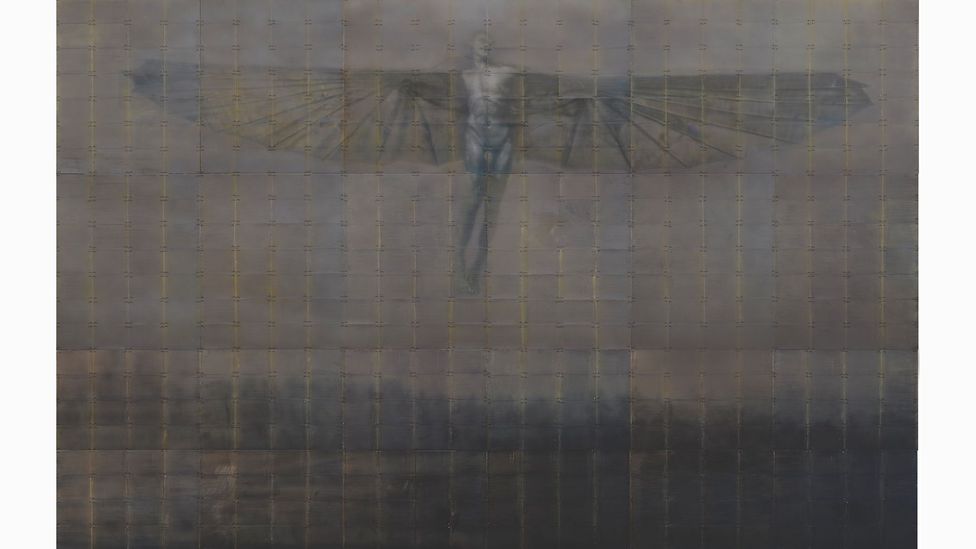
Mark Karasick drew on Michelangelo’s drawing Christ on the Cross for his work The Navigator (2018-19) (Credit: Mark Karasick)
“There’s the whole sense of victory, of ascension, and not necessarily of the religious kind,” he says. Karasick has given his Christ-like figure wings that cannot help but evoke Icarus. However, for Karasick they also allude to the aviation pioneer Otto Lilienthal, the first person to make repeated successful flights with gliders. Although the human desire for flight is often associated with hubris, Karasick sees it as an indication of tenacity and hope, the human desire to escape Earthly constraints. The finished work, The Navigator (2018-19), has a magical alchemic quality to it thanks to the ancient encaustic technique Karasick uses which involves using heated beeswax with tinted pigments. Karasick’s monumental, life-size figure soars above the desolate landscape beneath him, a religious icon transformed into a quasi-mythological being with an uplifting message for a secular age. And an enduring symbol of the power of iconic artworks to continue to stimulate, inspire and awe.
Inspiration: Contemporary Art and Classics is at The Ateneum in Helsinki until 20 September 2020.
If you would like to comment on this story or anything else you have seen on BBC Culture, head over to our Facebook page or message us on Twitter.
And if you liked this story, sign up for the weekly bbc.com features newsletter, called The Essential List. A handpicked selection of stories from BBC Future, Culture, Worklife and Travel, delivered to your inbox every Friday.


